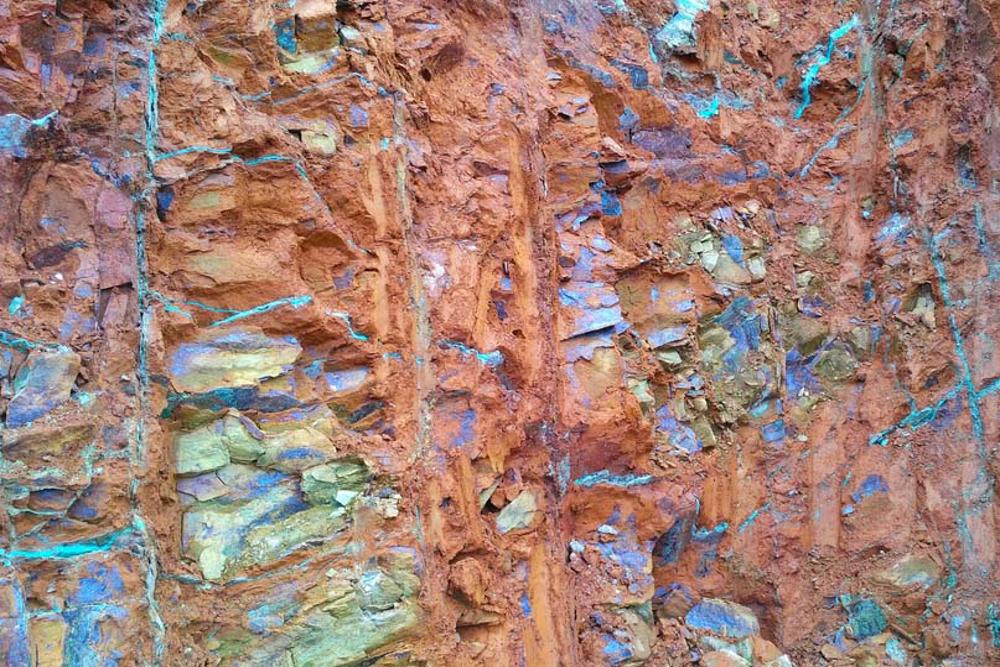
Although Australia’s tin sector hasn’t exactly been busy over the past decade, one ASX-listed junior (Caspin) is looking to help rectify this situation as it progresses a silvery metal exploration play in New South Wales.
With the exception of Metals X Ltd’s half-owned Renison operation on Tasmania’s west coast, the domestic industry is quiet, with most of the global tin production currently taking place in Southeast Asia and South America.
During early April, Perth-based Caspin Resources Ltd released further RC drilling results from its evolving Bygoo project, which sits 489 kilometres east of Sydney near the township of Ardlethan in NSW’s Riverina District.
The company has a land package covering 1180 square km comprising three granted leases surrounding the historic Ardlethan tin mine, a project that yielded around 48,000 tonnes of the metal between 1912 and 1986.
In its day this operation was Australia’s largest producer of the metal. It has been excised from the junior’s holdings.
Final results from Caspin’s maiden drilling program have returned further mouth-watering tin intercepts at Bygoo North. Overall, the company completed 12 holes for 1400 metres.
Highlights include assays of 16 metres at 1.35 per cent, including 2m at 3.16 per cent, from 65m; 19m at 0.49 per cent from 56m (which increases in grade downhole, with the last 4m returning 1 per cent before the hole was terminated after hitting underground workings); 3m at 0.91 per cent from 75m; 6m at 0.63 per cent from 121m, as well as 15m at 0.45 per cent from 132m.
These numbers complement earlier results of 11m at 2.3 per cent from 100m, with 5m at 4.63 per cent from 106m; 4m at 2.11 per cent from 79m and, in the same hole, 14m at 0.52 per cent from 135m; 100m at 0.33 per cent from 67m, including 27m at 0.48 per cent from 101m, and 30m at 0.48 per cent from 137m.
The Perth-based explorer recovered the tin mineral cassiterite in one hole by panning the interval at 108m. This information, the company said, was of vital economic importance when it came to the profitable processing of the metal’s mineralisation.
Cassiterite, the junior noted, was easily panned due to its large density contrast with gangue silicate minerals in the granite host rock.
The same fundamental processes of washing and gravity separation, it said, operated in large-scale processing plants around the world to create tin concentrate at low cost when compared to other forms of host mineralisation.
Moreover, Caspin had consistently found Bygoo’s targeted material to be constrained only by drilling ‒ in both extensions of high-grade lodes and the potential for additional new lodes to be discovered ‒ with large gaps remaining to be tested.
In addition, the company believed there was the potential for multiple stacked lodes at depth.
Meanwhile, three holes were drilled to test an area with elevated tin geochemistry and minor historical workings at the very northern end of the prospect. This drilling was completely reconnaissance in nature as there were no constraints on the likely orientation of any potentially mineralised structures.
Furthermore, rock chips sampled from around the workings returned tin results up to 0.38 per cent, while the only hole drilled to the northeast confirmed sub-surface mineralisation revealed 3m at 0.12 per cent and 0.36 per cent copper.
These results were considered very positive for the possibility of a northern extension to Bygoo North.
As a result, the company is encouraged that the mineralised system remains open with opportunities for further high-grade discoveries.
It said the combined strike length of surface outcropping tin occurrences and drilled mineralisation across Bygoo North was approximately 1000m, with many large gaps in the drill coverage providing what the junior believes are excellent opportunities for further discovery.
Caspin managing director Greg Miles indicated the results complemented an earlier spectacular result of the above-mentioned 11m at 2.30 per cent which “demonstrates excellent continuity of high-grade mineralisation”.
“Our maiden drill program at Bygoo North has far exceeded our expectations,” he said.
“With high-grade intervals … our program has proven Bygoo North is an exceptional tin discovery and an exploration project of national significance.”
According to India-based analyst Mordor Intelligence, the electronics sector continues to be a major influence on the tin market, with the global electrical industry showing robust growth.
In particular, the electric vehicle (EV) market has emerged as a significant driver for the silvery metal’s consumption, especially in critical applications such as battery technology and vehicle electronics.
Its versatility in the EV sector is further demonstrated through its use in tin nanoparticles, which help stabilise silicon graphite anodes in lithium-ion batteries, significantly boosting conductivity and performance while extending the anode’s lifetime.
These are likely to be a few of the reasons why the US Geological Survey has put tin on its critical minerals list.











